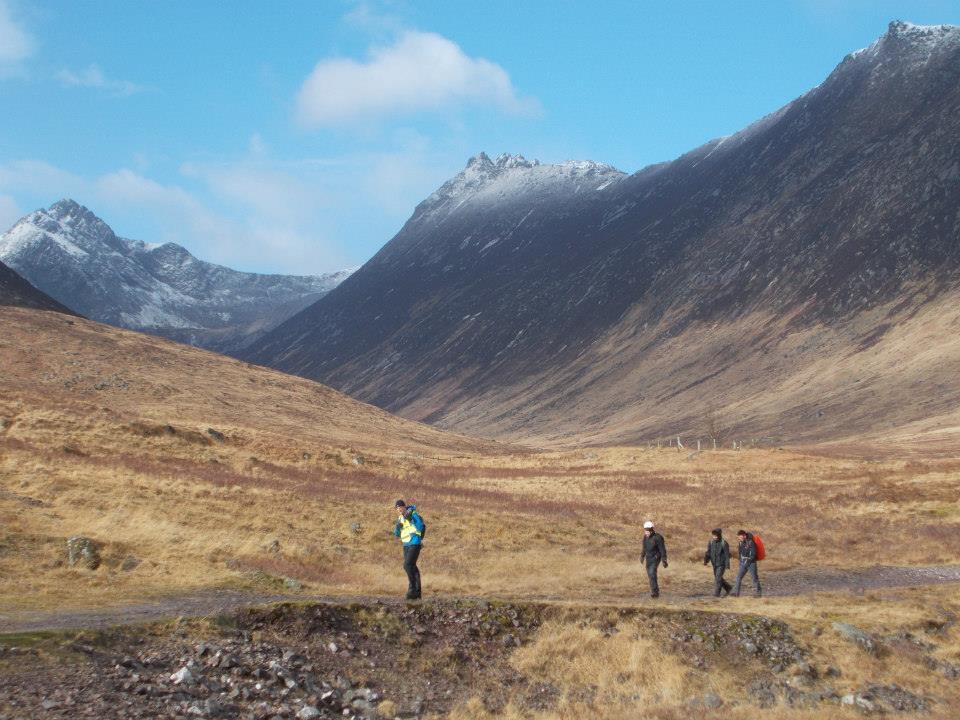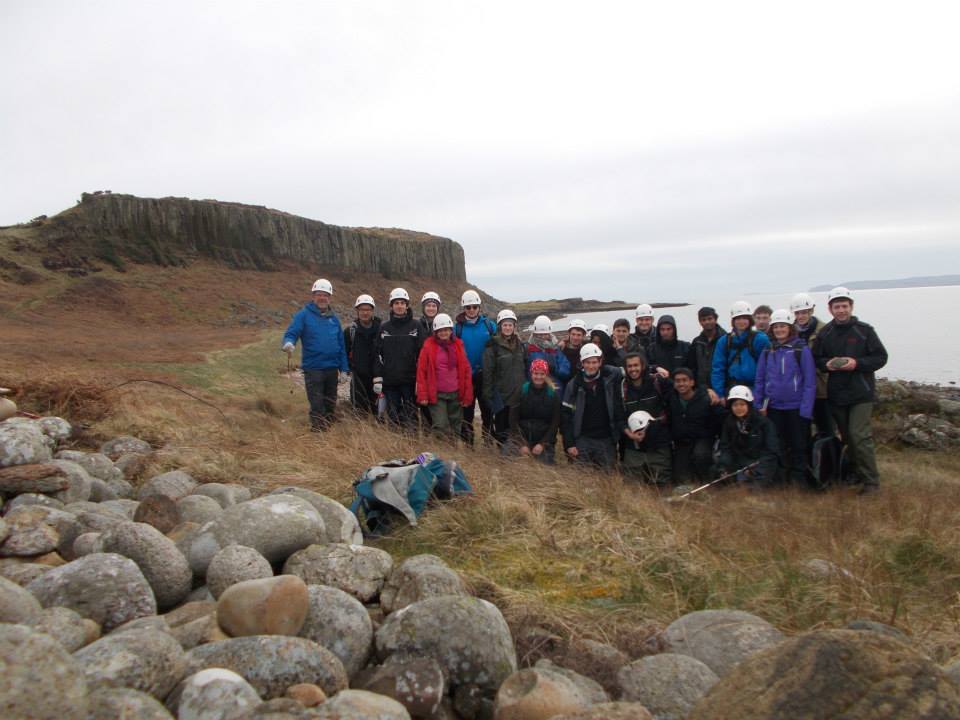The annual first year undergraduate field trip to the Isle of Arran, Scotland took place as usual at the end of March and beginning of April. This is always an exciting trip – first years get their first taste of what being a ‘real geologist’ is all about and the demonstrators get to revisit the truly spectacular wealth of geology the island has to offer.
The first two weeks were blessed with wonderful weather, and came back suntanned with tales of swimming in the sea (although I’m assured it was very cold), leaving the final week set off looking forward to their tropical holiday. Sadly, it was not to be – with hail stones the size of gravel (identified carefully using a granulometer) and average windspeeds of over 60 mph the trip became a test of character, tolerance of the cold and ability to stand up in extremely strong winds!

A pleasant day on the Ayrshire coast identifying pillow basalts and learning how to take strikes and dips was followed by a mercifully calm ferry crossing before the bad weather crept in. The first evening was spent, as is tradition, in the pub at Lochranza. The first years were quickly informed that diluting whisky with coke would not be looked on favourably by the barman with his 400-strong collection of vintage malts before everyone happily settled in for an evening out of the rain.
We split up into three groups lead by Prof James Jackson , Dr Ed Tipper and Prof Simon Redfern each day to explore different regions of geological time around the island. With different areas of expertise varying from tectonics, to geochemistry and mineral physics this allowed everyone to look at each outcrop with a different perspective and interpretation, allowing healthy debates and discussions during the evening talks.

A particular highlight was the walk along the drumadoon sill – as well as taking in its impressive silhouette and structure from the base, this year we had a drone so could view it from the top as well! Demonstrators also found the drone useful to keep an eye on students during the mapping day in North Glen Sannox, where students are released for the day (in the pouring rain) to hunt down contacts, interpret structures and make their first geological map.
The week came to an end all too soon. Heads buzzing with new geological information, firm friendships formed and plenty of whisky sampled the journey home was a rather comatose affair. It was good to see everyone again after some recovery time at the start of Easter Term for the Arran reunion lunchtime party, and the queue to sign up for the Sedgwick Club suggests 1B Geological Sciences is going to be a popular option next year!
Claire Nichols MSci 2010-2014, PhD 2014-

